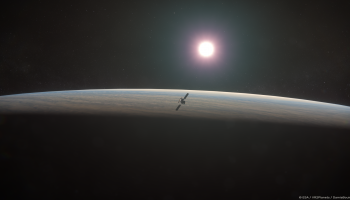In December 2021, the mission of the Atmosphere-Space Interactions Monitor (ASIM) on board the International Space Station (ISS) was planned to end. The instrument had to give up its location outside the Columbus module to another payload. Thanks to the outstanding science in catching upper-atmosphere electrical discharges such as red sprites or blue jets, ESA agreed to relocate the payload instead of removing and trashing it.
On March 1, the Danish ESA astronaut Andreas Morgensen will be replacing experiments during his mission aboard the International Space Station. Assisted by the B.USOC operators, he will be working on the third installation of the "Compacted Granulars" experiment in the Fluid Science Laboratory.
Mr. Ronald Van der Linden, Director General of the Royal Observatory of Belgium, took up his position as acting Director General at BIRA-IASB on 1 February 2024. He succeeds Martine De Mazière who has indicated her wish to step down from the general directorship of BIRA-IASB but will remain active as head of the institute’s Scientific Directorate.
Sunday 11 February 2024 marks the International Day of Women and Girls in Science. At BIRA-IASB, we believe that women's talents and abilities bring significant added value to our organisation. Therefore, we are taking this day to pay tribute to a very special colleague, Martine De Mazière.
On Wednesday January 31, his majesty the King Philippe of Belgium arrived at the door of the Royal Belgian Institute for Space Aeronomy (BIRA-IASB). He was received by the directors of the three institutes of the Space Pole site, including our own director Martine De Mazière. This was followed by a few explanations and presentations of the researchers themselves.
ESA’s next mission to Venus was officially ‘adopted’ today by the Agency’s Science Programme Committee. EnVision will study Venus from its inner core to its outer atmosphere. BIRA-IASB will be on board with the VenSpec-H instrument.





